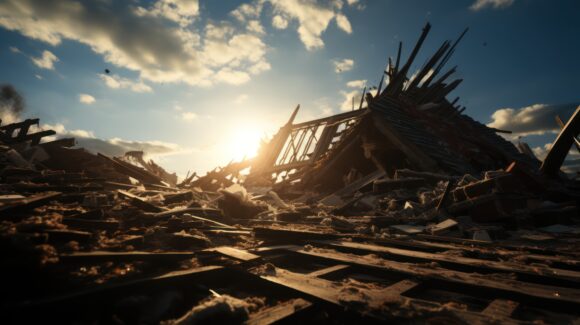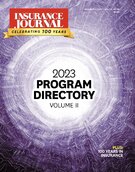I conceive that the great part of the miseries of mankind are brought upon them by false estimates they made of the value of things.” – Benjamin Franklin
Last year, I participated in a panel discussion on property undervaluation at the annual conference of the American Association of Insurance Management Consultants. It is no secret that the majority of buildings in this country, both commercial and residential, are underinsured. We’ve known it for decades, yet it continues unabated.
At the risk of boring you, but with the hope I can alarm you, let’s examine some statistics that you can share with your customers based on research I did for my presentation.
According to a study cited in the June 1976 CPCU Journal, “Insurance Copes With Catastrophe: The Xenia Tornado,” the average home damaged by this tornado was found to be 23% to 28% underinsured. That was almost a half century ago and nothing much has changed other than the numbers may now be worse than ever.
Exactly 10 years later, as published in the same journal, a study, “Recovery from the Barneveld Tornado,” found that 79% of total loss respondents were underinsured. Four out of five. A few years later, in 1991, another study cited by the CPCU Society indicated that the average home damaged in the Oakland-Berkeley Hills fire was underinsured by 22%. Some homes were underinsured by 200% to 300%.
According to the Insurance Information Institute, in the 1990s almost three-fourths of homes were underinsured by over one-third. In 2003, according to M&S/Boeckh (now CoreLogic), 64% of homes were underinsured by an average of 27%. By 2005, these numbers had improved slightly to 59% and 22%, respectively, though their analysis found that as much as 73% of many agencies’ books of homeowners business could have been undervalued by an average of up to 35%.
Keep in mind that not only are these properties underinsured for total or major losses, but commercial properties written on a coinsurance basis and homeowners dwellings typically written with 80% insurance-to-value conditions are possibly underinsured for even partial losses.
Following the 2007 California wildfires, the state insurance department estimated that over half of all impacted homeowners were underinsured and attributed this to inadequacies of valuation tools being used by the insurance industry and/or the training of those using these products.
A 2011 article about the 2007 San Diego wildfires authored by law professor Kenneth Klein in the Journal of Social Policy & The Law, “When Enough Is Not Enough: Correcting Market Inefficiencies In The Purchase And Sale Of Residential Property Insurance,” alleged that 74% of survey responders were underinsured by an average of $240,000.
According to industry consultant John Putnam, CPCU, who has consulted on several natural disasters in Colorado, homes impacted by the Waldo Canyon fire in 2012 were underinsured by at least 15-20%. Homes damaged or destroyed in the 2013 Black Forest Fire were, on average, about 35% underinsured.
The aforementioned professor Klein wrote another article, “Minding The Protection Gap: Resolving Unintended, Pervasive, Profound Homeowner Underinsurance,” in the Fall 2018 issue of Connecticut Insurance Law Journal that purported that 38% of 2013 Colorado Black Forest Fire survey respondents reported that they were underinsured by an average of $100,000, 53% of 2015 California Valley Fire respondents reported being underinsured by an average of $103,000, and 66% of 2017 California North Bay fires reported underinsurance by an average of $317,000.
An article, “Insurance Appraisals and Property Insurance Limit Risk,” published in the second quarter 2019 issue of the MTS Journal asserted that, in 2017 CoreLogic estimated that 75% of commercial businesses were underinsured by 40% or more and that, in 2016 about 60% of homes were undervalued by an average of 17%.
Recently, Insurance Journal cited a Hiscox survey that indicated that 75% of small businesses were underinsured across all lines of insurance. About two-thirds carried no workers’ compensation insurance, just over half had no property insurance, and a third had no general liability insurance. Clearly, undervaluation is not limited to direct property loss exposures.
Given the current hard market, one of the toughest we’ve experienced in many years, this condition is likely to worsen as policyholders choose to reduce coverage or limits to make insurance more affordable and stay within budgets. According to Swiss Re Sigma No. 5, “Undervaluation of residential property can be driven by a homeowner’s policy choice based on affordability rather than adequate coverage.”
While the numbers cited in this article focus primarily on the adequacy of policy limits for common loss exposures, one thing that consultant John Putnam noticed in his pro bono reviews of scores of homeowners policies was how few of them included coverage broadening endorsements of any kind. Other than the occasional jewelry schedule endorsement, none of the many dozens of broadening endorsements readily available from a variety of carriers were included in many homeowners policies he reviewed.
The question is, are we not selling or are consumers not buying outside of hard markets like we find ourselves in today?
Resolutions
But, back to the topic at hand about underinsurance from the standpoint of limits and/or critical coverages, what can we do about this? I would start with the following five resolutions for the New Year and beyond.
First, develop more simplified, but also more accurate, valuation systems. We can start with eliminating “ballpark” valuations based on five- to 13- item shortcut programs. If properties continue to be systemically undervalued, does some fault lie with the valuation products themselves, with the accuracy of the data, with the predictability of the algorithms?
Second, improve user training and/or limit product use to qualified individuals. Are agents or contract inspection companies properly trained? Are the users simply not qualified to gather information and process it using these products? Is there a need for a new appraisal certification or designation program?
Third, is there a need to return to some form of “guaranteed” replacement cost coverage? If homes, on average, are 25% underinsured, should there be a 25% increased limit provision from major or catastrophic widespread loss occurrences? Should this be an option or a mandate? Should it be available only if appraisals are conducted by “certified” personnel? Two existing examples of this type of coverage are ISO’s HO 04 11 – Additional Limits Of Liability For Coverages A, B, C, And D or their HO 04 20 – Specified Additional Amount Of Insurance For Coverage A – Dwelling. Are we offering? Are customers buying?
Fourth, make better use of special catastrophic increased limits options. It’s no secret that underinsurance is more likely to occur following widespread losses such as hurricanes, tornados, wildfires, etc. when labor and materials demands greatly exceed supplies. One such example of this is ISO’s CP 04 09 – Increase In Rebuilding Expenses Following Disaster (Additional Expense Coverage On Annual Aggregate Basis) endorsement. Longer build-back time frames also suggest the need for higher limits of business income coverage and homeowners additional living expenses coverage.
Fifth, make better use of existing coverage options such as inflation guards, extra debris removal coverage, functional replacement cost, etc. Examples include ISO’s HO 04 46 – Inflation Guard and their CP 04 15 – Debris Removal Additional Insurance endorsements. Pay special attention to debris removal coverage, which is often inadequate and almost always overlooked. Commercial property forms typically place a 25% sublimit of the loss for debris removal with an extra $25,000 or so if needed. In the 2018 California Camp Fire, almost 19,000 structures were destroyed with an estimated 16 billion pounds of debris that had to be removed. Following the 2020 Minnesota riots, debris removal expenses were reportedly $200,000 to $300,000 per building but owners rarely had more than 10% to 20% of that amount available.
Hopefully, you’ll agree that minimizing underinsurance in 2024 is a worthy New Year’s resolution. Let’s better use the tools available to us today to achieve that goal and work to improve them in the coming years. Admittedly this is a tough order under hard market conditions but so much is at stake that it compels us to sell coverage, not price, whenever possible.
Topics California
Was this article valuable?
Here are more articles you may enjoy.



 Howden Buys M&A Insurance Broker Atlantic Group in US Expansion
Howden Buys M&A Insurance Broker Atlantic Group in US Expansion  Litigation Funding, Other New Laws in SE States Could Impact Liability Insurance
Litigation Funding, Other New Laws in SE States Could Impact Liability Insurance  High-Net-Worth Risk Appetite Drops as Some Regions Show Stabilization
High-Net-Worth Risk Appetite Drops as Some Regions Show Stabilization  AIG’s Zaffino to Step Down as CEO as Aon’s Andersen Steps In
AIG’s Zaffino to Step Down as CEO as Aon’s Andersen Steps In 



